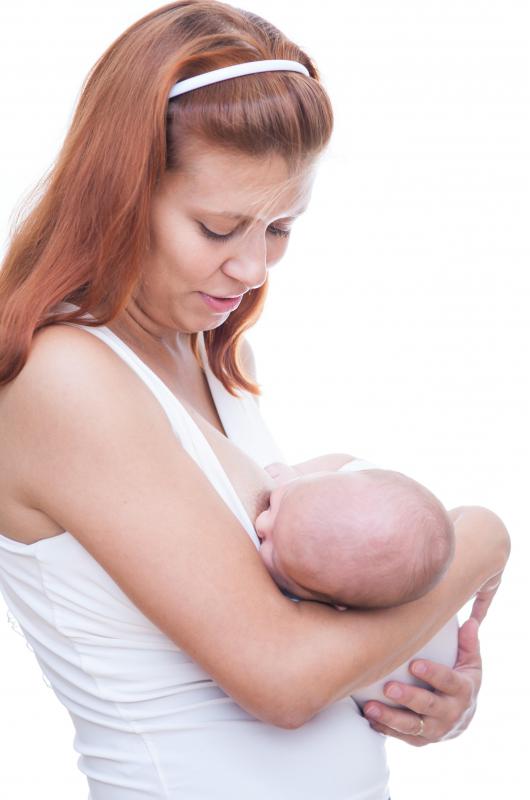At WiseGEEK, we're committed to delivering accurate, trustworthy information. Our expert-authored content is rigorously fact-checked and sourced from credible authorities. Discover how we uphold the highest standards in providing you with reliable knowledge.
What are the Different Types of Breastfeeding Creams?
Breastfeeding can sometimes be a challenge for both mother and baby, which is why there is plenty of help available. One of the most common issues among nursing mothers is cracked nipples that get dry enough to bleed, which is why there are various creams available to heal them. Among the most popular breastfeeding creams on the market is the lanolin-based kind, which does not usually need to be removed from the breast before nursing the baby. Unfortunately, some women have had a bad skin reaction to this type of cream due to an allergy, so they may opt to use natural breastfeeding creams instead, which do not contain lanolin. On the other hand, some mothers suffer from thrush while breastfeeding, in which case an antifungal antibiotic is typically prescribed for women to apply to their breasts.
The cream that is most frequently used by breastfeeding mothers is the lanolin-based type, as this popular ingredient is often used in moisturizers due to its ability to soothe dry, chapped skin. It can be applied to the nipples both before and after nursing, and does not need to be wiped off before the baby latches on. Lanolin is considered natural since it is found in sheep wool, but it is often combined with various other ingredients to create most breastfeeding creams on the market. Additionally, there may be traces of pesticides in this type of product, leading some women to notice adverse reactions in their skin.

An alternative to breastfeeding creams that contain lanolin is the more natural type, which is often also known as organic. Natural breastfeeding cream tends to replace lanolin with herbs, such as calendula and marshmallow root. It also usually features soothing substances that may include shea butter, cocoa butter, and extra virgin olive oil. Not surprisingly, this product does not typically need to be washed off the breasts before nursing, similar to the lanolin-based kind.

Some mothers have more of a problem with thrush than with dry, cracked nipples, and need cream to eliminate the problem. Thrush is caused by the presence of yeast, which can cause the nipples to burn and appear particularly red and shiny. The baby may have symptoms of thrush, as well, such as white patches on the tongue, abnormal fussiness, and severe diaper rash. Once this issue is diagnosed, the doctor may prescribe an antifungal antibiotic, which should clear up the thrush within days or weeks. If prescription antifungal antibiotic breastfeeding creams do not work, some mothers may have to take oral medication and change their diet to avoid both sugar and bread, as such products can cause yeast to thrive.
AS FEATURED ON:
AS FEATURED ON:













Discuss this Article
Post your comments